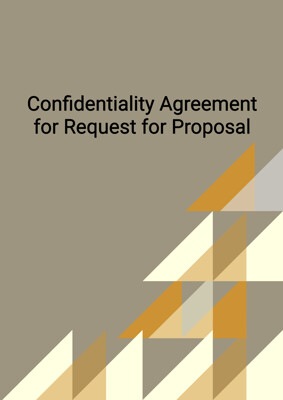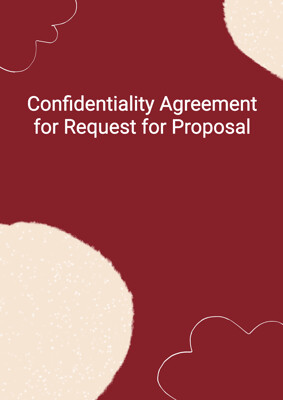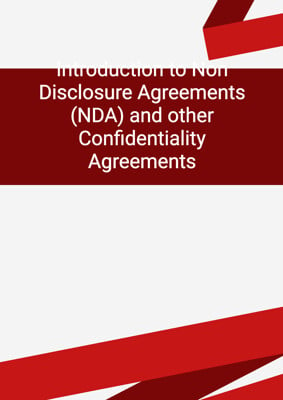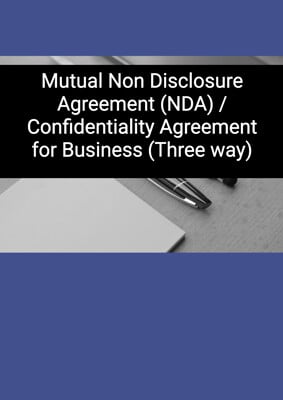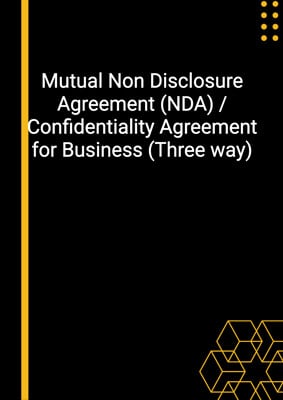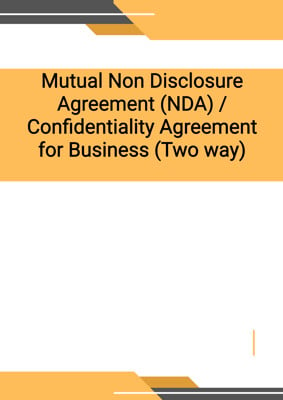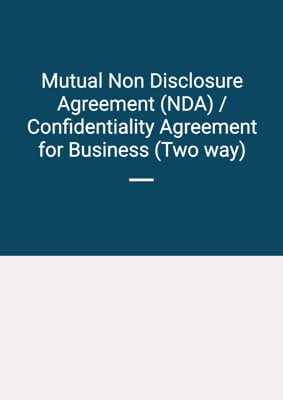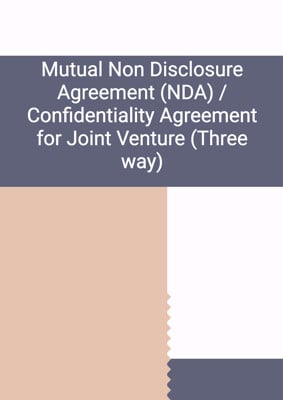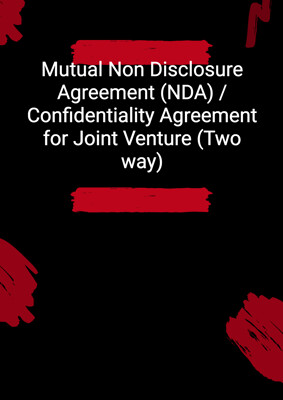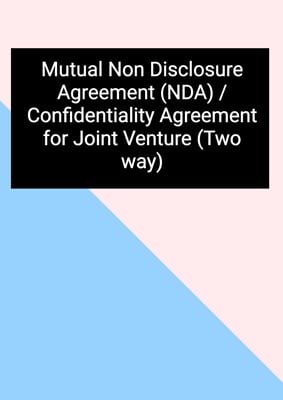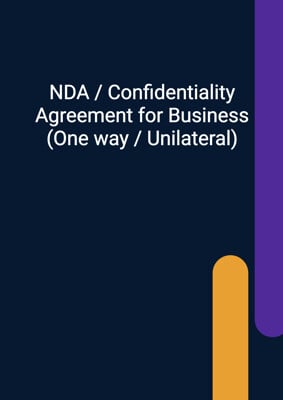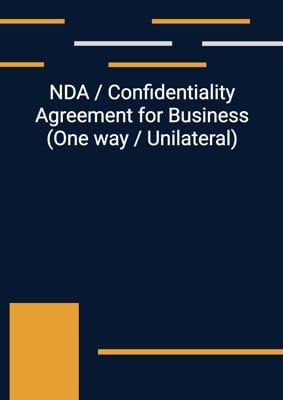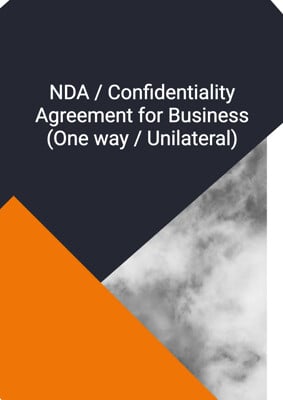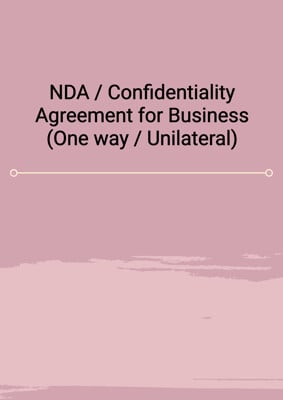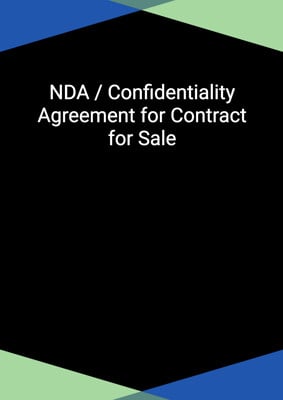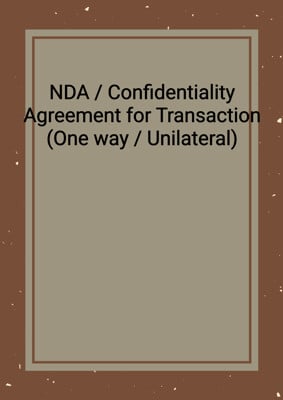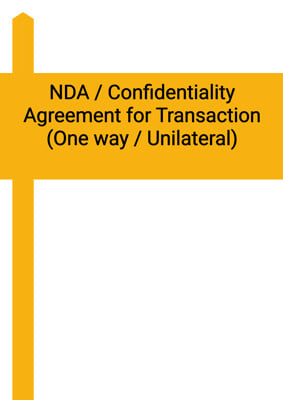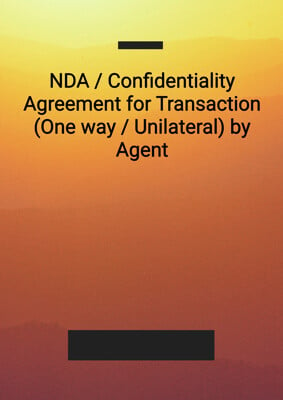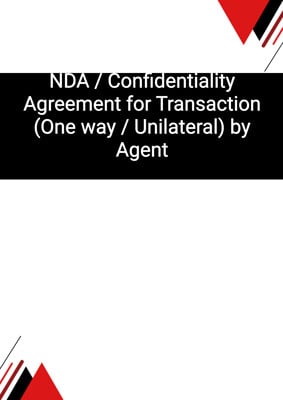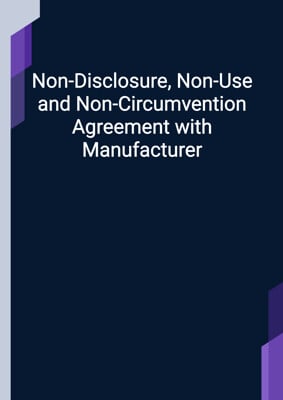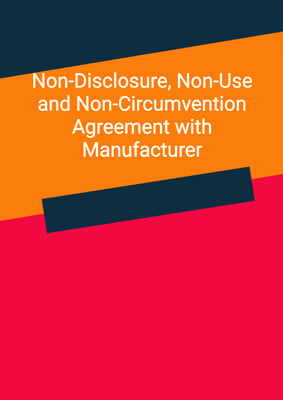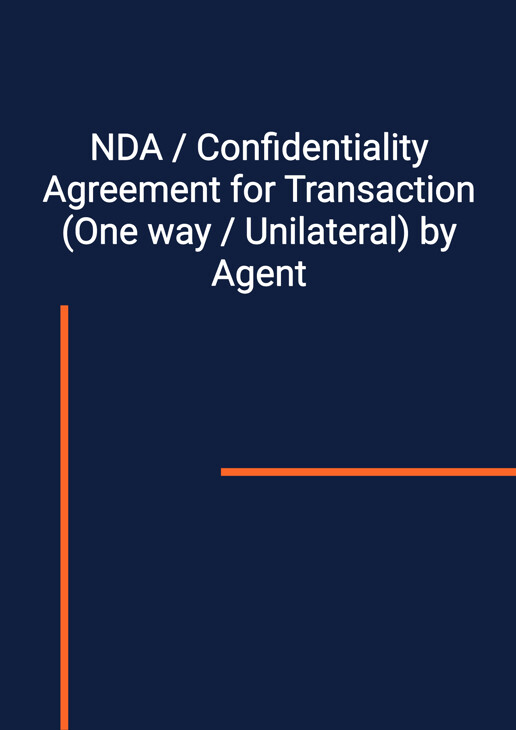
NDA / Confidentiality Agreement for Transaction (One way / Unilateral) by Agent
Disclosee / Receiver
One way Non Disclosure agreement for Discloser to reveal detail of the Transaction to the Disclosee by an Agent (e.g. bank or securities firm) of the Principal. It imposes a unilateral obligation of confidentiality on the party who receives the information. This is drafted in favour of the Disclosee.
How to Tailor the Document for Your Need?
01
Create Document
Fill in the details of the parties. You can click the "Fill with Member’s Information" button to complete it with information saved to your account.
02
Fill Information
Please fill in any additional information by following the step-by-step guide on the left hand side of the preview document and click the "Next" button.
03
Get Document
When you are done, click the "Get Document" button and you can download the document in Word or PDF format.
04
Review Document
Please get all parties to review the document carefully and make any final modifications to ensure that the details are correct before signing the document.
Document Preview
Document Description
This document is a Non-Disclosure Agreement (NDA) or Confidentiality Agreement for a transaction, specifically a one-way or unilateral agreement by an agent. The importance of this document lies in its ability to protect the confidential information related to the transaction and ensure that it is not disclosed to unauthorized parties. The agreement is entered into between two parties: the discloser (Party 1) and the disclosee (Party 2).
The document begins with an introduction, stating that the disclosee has expressed an interest in the transaction, and the discloser is prepared to make available certain confidential information about the transaction. The agreement covers any information supplied by the discloser, the principal, or any connected persons, orally, in writing, or in any other form, to the disclosee or its representatives in connection with the transaction.
The interpretation section of the agreement defines various expressions used throughout the document, such as connected persons, group, information, purpose, representatives, and writing. These definitions ensure clarity and understanding of the terms used in the agreement.
The obligations of confidentiality are outlined in Section 2 of the agreement. The disclosee undertakes to maintain the confidentiality of the information and use it exclusively for the purpose stated in the agreement. The disclosee is prohibited from copying, reproducing, or reducing the information to writing, except as necessary for the purpose. Furthermore, the disclosee is not allowed to use, reproduce, transform, or store the information in an externally accessible computer or electronic information retrieval system, except on a need-to-know basis.
Section 3 of the agreement focuses on confidentiality measures. The disclosee is required to restrict the disclosure of the information to its representatives who need access to it for the purpose. The disclosee must apply security measures and a degree of care to the information that is no less than what it applies to its own confidential information. The disclosee is also responsible for ensuring that any stored information is secured and access is limited.
The agreement includes provisions for excepted information in Section 4. Certain information is exempt from the confidentiality obligations if it is lawfully available to the public, previously known to the disclosee, disclosed by a third party with the right to do so, or independently developed by the disclosee. Additionally, if the disclosee is legally required to disclose the information, it is entitled to do so.
Section 5 addresses the return of information. Upon request, the disclosee must return or destroy all hard copy documents and materials containing the information. If any information is stored electronically, the disclosee must ensure it is secured or destroyed. However, reports, notes, or other material prepared by the disclosee or its advisers incorporating the information are not required to be returned or destroyed.
The agreement includes a disclaimer and warranty in Section 6. The discloser reserves all rights in its information, and no rights or obligations other than those expressly granted are implied from the agreement. The discloser warrants its right to disclose the information and authorizes the disclosee to use it for the purpose. The agreement does not create an obligation for either party to enter into the transaction.
Section 7 focuses on confidentiality, stating that the existence and nature of the agreement should be kept confidential. Any announcement or circular relating to the agreement must be approved by both parties. The agreement does not prevent the disclosee from contacting its existing customers, suppliers, contractors, or sub-contractors in the ordinary course of business, as long as it does not refer to the transaction.
Section 8 acknowledges that damages would not be an adequate remedy for a breach of the agreement and provides for other remedies. Section 9 states that the rights, powers, and remedies provided in the agreement are cumulative and not exclusive.
Section 10 prohibits the assignment of rights or obligations under the agreement by either party. Section 11 states that the agreement constitutes the entire agreement between the parties and supersedes any prior representations or warranties.
Section 12 clarifies that the agreement does not grant any rights to either party under intellectual property laws, except as expressly set forth. Section 13 specifies the governing law and jurisdiction for the agreement.
Section 14 outlines the procedures for giving notices and service between the parties. The addresses and contact information of the parties are provided for this purpose.
Finally, Section 15 states that the agreement does not grant any rights to third parties to enforce its terms.
In summary, this NDA or Confidentiality Agreement is a comprehensive document that establishes the obligations of confidentiality between the discloser and the disclosee regarding the transaction. It covers the interpretation of terms, obligations of confidentiality, confidentiality measures, exceptions, return of information, disclaimers, confidentiality requirements, remedies, rights, assignment, entire agreement, intellectual property, governing law, notices, and service.
How to use this document?
1. Read and understand the entire agreement: Familiarize yourself with the content and purpose of the NDA or Confidentiality Agreement.
2. Identify the parties: Determine the names and principal places of business of both the discloser (Party 1) and the disclosee (Party 2).
3. Understand the interpretation section: Review the definitions provided in the agreement to ensure a clear understanding of the terms used throughout.
4. Comply with obligations of confidentiality: As the disclosee, you must maintain the confidentiality of the information and use it exclusively for the purpose stated in the agreement. Avoid copying, reproducing, or storing the information without a need-to-know basis.
5. Implement confidentiality measures: Restrict the disclosure of the information to your representatives who require access for the purpose. Apply security measures and a degree of care to protect the information.
6. Be aware of excepted information: Understand the types of information that are exempt from the confidentiality obligations, such as publicly available information or information previously known to you.
7. Return or destroy information: Upon request, return or destroy all hard copy documents and materials containing the information. Secure or destroy electronically stored information.
8. Consider the disclaimer and warranty: Understand that the discloser reserves all rights in its information and that the agreement does not create an obligation to enter into the transaction.
9. Maintain confidentiality: Keep the existence and nature of the agreement confidential. Obtain approval for any announcements or circulars related to the agreement.
10. Contact existing customers and suppliers: You are allowed to continue contacting your existing customers, suppliers, contractors, or sub-contractors in the ordinary course of business, as long as you do not refer to the transaction.
11. Understand remedies: Be aware that damages may not be an adequate remedy for a breach of the agreement. Consider other available remedies.
12. Know your rights: Understand that the rights, powers, and remedies provided in the agreement are cumulative and not exclusive.
13. Do not assign rights or obligations: Neither party is allowed to assign any rights or obligations under the agreement.
14. Entire agreement: Recognize that the agreement constitutes the entire agreement between the parties and supersedes any prior representations or warranties.
15. Respect intellectual property rights: Understand that the agreement does not grant any rights to intellectual property, except as expressly stated.
16. Follow governing law and jurisdiction: Abide by the governing law and jurisdiction specified in the agreement.
17. Comply with notice and service requirements: Follow the specified procedures for giving notices and service between the parties.
18. No rights for third parties: Understand that third parties do not have the right to enforce any terms of the agreement.
Please note that this guidance provides a general overview and does not constitute legal advice. It is recommended to consult with a legal professional for specific guidance related to your situation.
Not the right document?
Don’t worry, we have thousands of documents for you to choose from:

